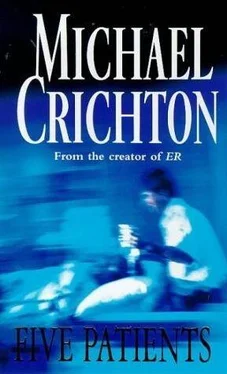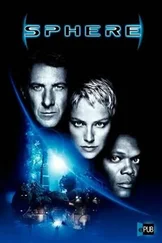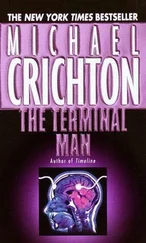Michael Crichton - Five Patients
Здесь есть возможность читать онлайн «Michael Crichton - Five Patients» весь текст электронной книги совершенно бесплатно (целиком полную версию без сокращений). В некоторых случаях можно слушать аудио, скачать через торрент в формате fb2 и присутствует краткое содержание. Жанр: Триллер, на английском языке. Описание произведения, (предисловие) а так же отзывы посетителей доступны на портале библиотеки ЛибКат.
- Название:Five Patients
- Автор:
- Жанр:
- Год:неизвестен
- ISBN:нет данных
- Рейтинг книги:5 / 5. Голосов: 1
-
Избранное:Добавить в избранное
- Отзывы:
-
Ваша оценка:
- 100
- 1
- 2
- 3
- 4
- 5
Five Patients: краткое содержание, описание и аннотация
Предлагаем к чтению аннотацию, описание, краткое содержание или предисловие (зависит от того, что написал сам автор книги «Five Patients»). Если вы не нашли необходимую информацию о книге — напишите в комментариях, мы постараемся отыскать её.
Five Patients — читать онлайн бесплатно полную книгу (весь текст) целиком
Ниже представлен текст книги, разбитый по страницам. Система сохранения места последней прочитанной страницы, позволяет с удобством читать онлайн бесплатно книгу «Five Patients», без необходимости каждый раз заново искать на чём Вы остановились. Поставьте закладку, и сможете в любой момент перейти на страницу, на которой закончили чтение.
Интервал:
Закладка:
"We don't claim that this is a perfect system by any means. But it's an interesting way to provide a doctor to an area that might not otherwise have one."
Boston's Logan Airport is the eighth busiest in the world. In addition to the steady stream of incoming and outgoing passengers, there are more than 5,000 airport employees. The problem of providing medical care to this population has been a difficult one for many years. Like many populations, it is too large to be ignored, but too small to support a full-time physician in residence. Nor can a physician easily make the journey back and forth from the hospital to the airport; though only 2.7 miles away, the airport is, practically speaking, isolated for many hours of the day by rush-hour traffic congestion.
The solution of Dr. Kenneth T. Bird, who runs the unit, has been to provide a physician when the patient demand is heaviest, and to provide additional coverage by television. The system now used, called Tele-Diagnosis, is frankly experimental. It has been in operation for slightly more than a year. At the present time, eight to ten patients a day are interviewed and examined by television.
The Logan TV system is probably the first of its kind in the country, but Bird refuses to discuss priority. "The first to have it," he says, "was Tom Swift, in 1914."
Certainly there is a science-fiction quality about the station's equipment, for along with the Tele-Diagnosis apparatus, there is also a time-sharing station linked to the hospital's computer. Among other things, this computer can be used to take a preliminary history-to function as a doctor in questioning the patient about his symptoms and their nature. Some 15 per cent of the patients examined by Tele-Diagnosis have had their medical history taken by computer before they see the doctor himself. Like the cardiogram, the computer history can be sent directly to the physician.
Being interviewed by a machine is less bizarre than it sounds. Indeed, like the TV link-up, it is remarkable for the ease with which patients accept it. The most common complaint is boredom: the machine sometimes pauses three or four seconds between questions, and the patients get fidgety.
To be interviewed, one sits in front of a teletype console. The computer asks questions, which are printed out, and the patient punches in his answers. Whenever the computer gets a "yes" answer to some question, it follows it up with more questions on the same subject. If it gets a "no" answer, it goes on to the next topic. At the conclusion of the question, the computer writes out a medical summary. Unlike the questions, the summary is phrased in medical terminology. The entire process takes roughly half an hour.
The result of one such interview is reprinted in part below. The computer was given the same presenting complaint as that of Mrs. Thompson: chest pain. In an attempt to confuse it, the machine was first fed some false but suggestive information, namely, that there was a family history of cardiovascular disease, and that the patient was taking digitalis. However, in later questions, the machine was given a straightforward history for the type of chest pain most common among medical students-that of psychogenic, or musculoske-letal, origin.
A sample of the questions and answers ran as follows:
SEVERAL MONTHS
A FEW YEARS
DO YOU HAVE THIS COUGH EVERY DAY?
YES
DO YOU BRING UP ANY MATERIAL (SUCH AS SPUTUM, PHLEGM, OR MUCUS) FROM YOUR CHEST?
NO
HAVE YOU EVER COUGHED UP BLOOD?
NO
At the conclusion of these and other questions, the computer printed the following summary:
NO
DO YOU HAVE A COUGH?
YES
HOW LONG HAVE YOU HAD THE COUGH?
1. A FEW DAYS
2. A FEW WEEKS
MEDICAL HISTORY SUMMARY DATE: MAY 27, 1969
NAME: MICHAEL CRICHTON UNIT #: DEMO
AGE: 26 SEX: MALE
CHIEF COMPLAINT: CHEST PAIN COMMUNITY PHYSICIAN: NONE OCCUPATION: MEDICAL STUDENT
MEDICATIONS: DIGITALIS DRUG REACTIONS: PAN ALBA HOSPITALIZATIONS: NONE
FAMILY HISTORY: HEART ATTACK, HYPERTENSION.
SOCIAL HISTORY
PT. IS MARRIED, HAS NO CHILDREN. COLLEGE GRADUATE. PRESENTLY A STUDENT, WORKING 50-60 HRS/WK. HAS BEEN SMOKING 5-10 YRS, 1 PACK/DAY. ALCOHOLIC CONSUMPTION: 1 DRINK/DAY. FOREIGN TRAVEL WITHIN THE LAST 10 YEARS.
REVIEW OF SYSTEMS
GENERAL HEALTH
NO SIGNIFICANT WEIGHT CHANGE IN PAST YEAR. SLEEPS 6-8 HRS/NIGHT. HEAD INJURIES: NONE WITHIN PAST 5 YRS. EYE SYMPTOMS: NONE. HAS BEEN TOLD BY MD OF NO EYE DISEASE. NO TINNITUS. NO EPISTAXIS, NOTES SINUS TROUBLE, DENIES CHANGE IN VOICE.
RESPIRATORY SYSTEM
PT. NOTES COUGH OF SEVERAL MONTHS DURATION, WHICH OCCURS DAILY. DENIES SPUTUM PRODUCTION, DENIES HEMOPTYSIS. NOTES NO DYSPNEA. HAS HAD HAY FEVER. HAS HAD NO KNOWN CONTACT
WITH TUBERCULOSIS. LAST CHEST X RAY -2 YRS AGO.
CARDIOVASCULAR SYSTEM
PT. NOTES CHEST PAIN OCCURRING LESS THAN ONCE A MONTH, LOCATED "ON BOTH SIDES," WHICH RADIATES TO NEITHER ARM NOR NECK. PAIN IS NOT AFFECTED BY DEEP BREATHING, IS NOT ASSOCIATED WITH EATING, EMOTION, OR EXERCISE. PAIN IS NOT RELIEVED BY RESTING. PT. NOTES PALPITATIONS ON RARE OCCASIONS. DENIES ORTHOPNEA. DENIES PEDAL EDEMA, DENIES LEG PAINS, DENIES VARICOSE VEINS, DENIES PERIPHERAL REACTION TO COLD. CARDIAC MEDICATIONS: NONE. HAS BEEN TOLD BY MD OF NO COMMON CARDIAC DISEASE. NO ECG IN PAST 2 YRS.
This is only half the total report. Analysis of gastrointestinal musculoskeletal, genito-urinary, hematologic, endocrine, dermatologic, and neurological systems followed. This particular computer program draws no conclusions about diagnosis; it only summarizes answers to its own questions, and it does not cross-check itself. Thus, while the computer was told the patient took digitalis, it later accepted the conflicting statement that the patient took no cardiac medications.
This program, which was devised at the MGH, is a rather simple example of the way that computers can and almost certainly will be used in the future. But it is the least sophisticated of the medical-history programs available; more complex ones already exist.
When Mrs. Thompson arrived at the MGH emergency ward, which had been expecting her, she was taken down to the EW X-ray department. In doing so, she passed a door near the front of the EW which is unmarked, without a label. Over the door is a lighted sign that says, incongruously, "On Air."
Dr. Murphy was behind that door, sitting in a corner of a small room, surrounded by equipment. Directly in front of him was a camera and a large TV screen, on which he watches the Logan patients. Built into his desk were two other screens: one, a small monitor of the larger screen, the other, a monitor that showed him his own image being transmitted to the patient. This second monitor allowed him to check his own facial expressions, the lighting in the room, and so on.
To his right was a panel of buttons that controlled the various remote cameras-two in the examining room and one in the laboratory. The examining-room remote camera is operated by a joystick: by pushing the stick right or left, up or down, the camera moves accordingly. In addition, there are buttons for focusing and zoom control.
Before going out to check on Mrs. Thompson, Dr. Murphy continued a study of Tele-Diagnosis
capability: reading a series of 120 chest X rays that are set up for him at Logan. He planned to read these by TV and later reread them in person, to compare the accuracy and consistency of his diagnosis.
The nurse at Logan set up the next X ray.
"What's this one?"
"Jay-nineteen," the nurse said, reading off the code number.
"Okay." He moved the joystick and touched the buttons. The camera tracked around the X ray, examining the ribs, then scanning the lung fields. "Wait a minute." He zoomed in to look closely at the right-upper lobe; he watched the little monitor, because resolution was better, but by glancing up at the large screen, he could also get a magnified view. "No. Well, on second thought…" He zoomed back for an over-all view. He zoomed in on another part of the upper lobe. "Looks like a small cavitation there…" He zoomed back, touching the buttons. He turned to the joystick, panned across the rest of the lung field, occasionally pausing to look at suspicious areas. "Nothing else, not really…" He finished his scan, and returned to the right-upper lobe. "Yes, there's cavitation. I'd have to call it moderately advanced tuberculosis. Next, please."
Читать дальшеИнтервал:
Закладка:
Похожие книги на «Five Patients»
Представляем Вашему вниманию похожие книги на «Five Patients» списком для выбора. Мы отобрали схожую по названию и смыслу литературу в надежде предоставить читателям больше вариантов отыскать новые, интересные, ещё непрочитанные произведения.
Обсуждение, отзывы о книге «Five Patients» и просто собственные мнения читателей. Оставьте ваши комментарии, напишите, что Вы думаете о произведении, его смысле или главных героях. Укажите что конкретно понравилось, а что нет, и почему Вы так считаете.









